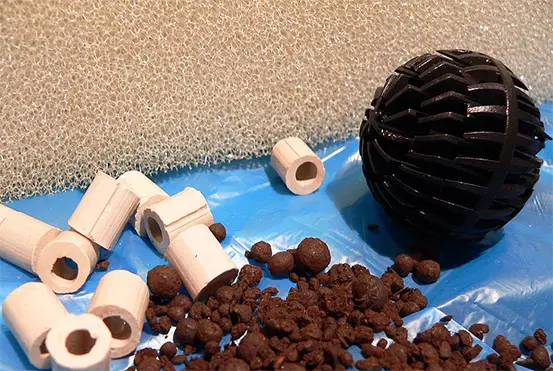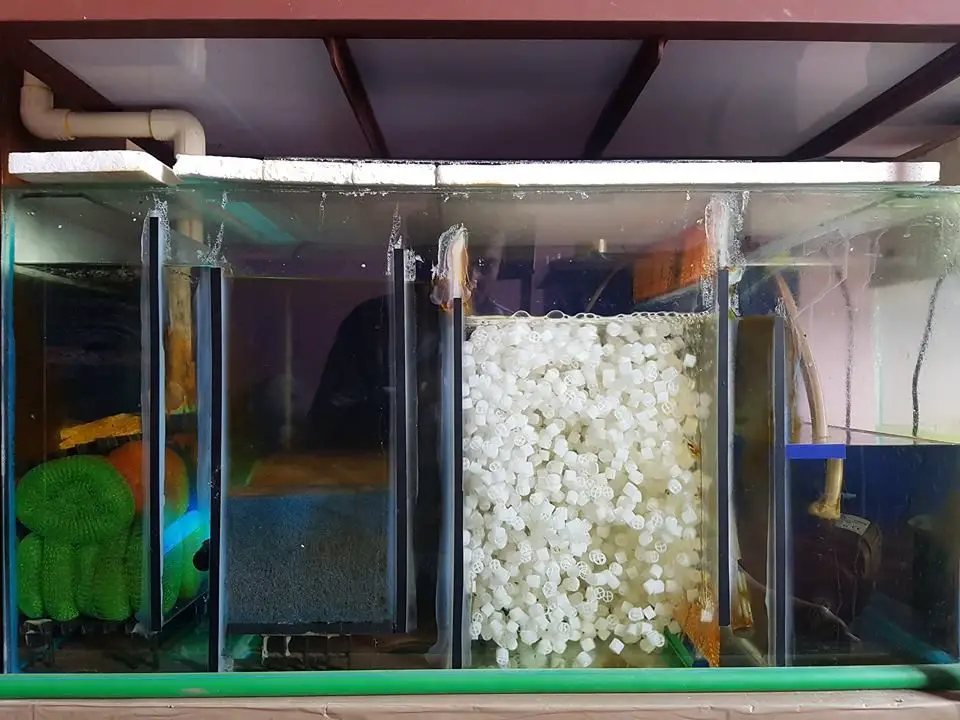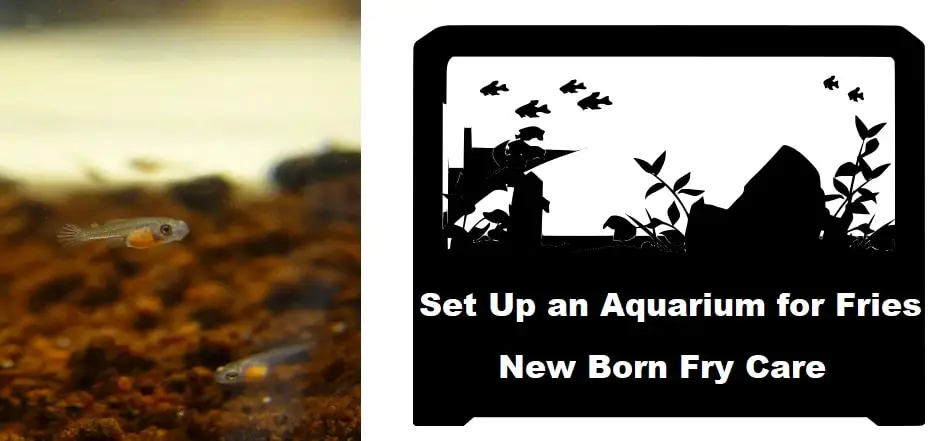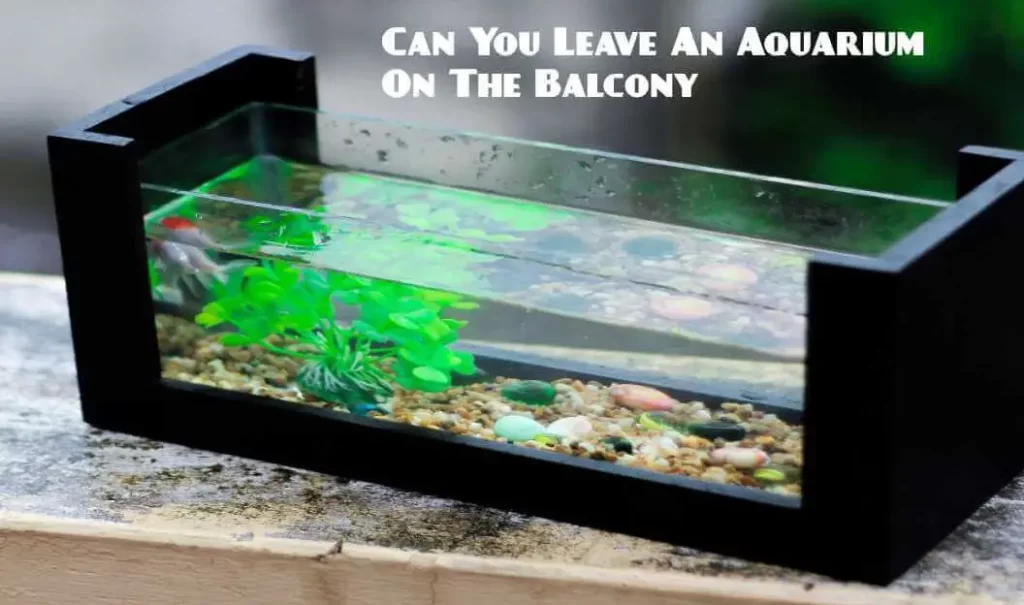Aquarium filters are a necessary part of any aquarium. They keep the water clean and your fish healthy by removing debris, excess food, and other harmful particles from the water. The tank filter media is what does this work! But how do you know What is the correct way to order the aquarium filter media? Which order to stack these products in?
The aquarium filter media order for canister filter or a sump filter is Coarse Mechanical Media, Fine Mechanical Media, Biological Media, and Chemical Media. This order is essential because it will allow the water to flow through each media type in sequence, meaning that all of your aquarium’s needs are met.
In this blog post, we will discuss why stacking aquarium filter media in specific orders is essential and what order they should be stacked in.
Aquarium Filter Media Order
The correct filter media order is to start with mechanical, followed by biological, then carbon. This order is because carbon needs to clean up the nitrates created by biological filtration, and mechanical media removes particulate organic matter.
The correct order of aquarium filter media is:
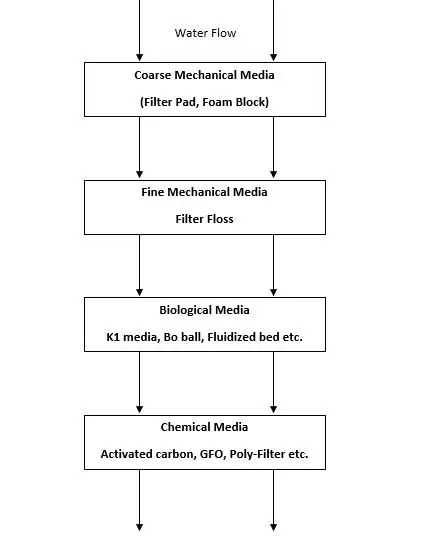
Why This Order Of Aquarium Filter Media?
The order of the filter media is essential because each one has a different function. The coarser mechanical media removes larger pieces like hair and plant debris; while finer mechanical filters remove smaller particles such as dust and bacteria. Biological filtration takes place on porous surfaces where it colonizes aerobic microorganisms that break down ammonia into nitrates, which carbon media adsorbs. Carbon media needs to be replaced more often because it has a higher exchange capacity and removes organic compounds, including ammonia, nitrites, and chloramines.
What Order Should My Filter Media Be In?
The order of the filter media should always start with mechanical, followed by biological. The next layer is carbon which can be used in these two locations:
Carbon can go under the biological media layer or over the top of it. If you choose to put it on top, make sure that your mechanical filter media are coarse enough to allow adequate water flow. People often stack their carbon, so they have a coarser material at the bottom and a finer material on top.
Coarse Mechanical
The first layer is typically a coarse mechanical filter to remove large particles and ensure that the other media functions correctly.
This will remove larger particles from the water, serving as a food source for bacteria and other pathogens that may lead to infection or disease.
Fine Mechanical
The second layer is the fine mechanical media which will remove finer particles like dust and bacteria.
Biological
The third layer is the biological media which will colonize microorganisms that break down ammonia into nitrates.
This should always be a porous material that provides surface area for colonization of aerobic microorganisms to break down ammonia into nitrates, which carbon media adsorbs. The best type of biological media are sponges or ceramic noodles because they provide a large surface area.
Carbon
The fourth layer is carbon media which adsorbs organic compounds including ammonia, nitrite, and chloramines. Again, you need to replace carbon more often than biological media because it has a higher exchange capacity.
This layer of aquarium filter media is typically a finer grade, such as activated carbon or zeolite pellets. These types of media are designed to remove chemicals from the water, such as chlorine and chloramines.
Specific Chemical
The last layer should be chemical filtration or purification. You should never use Chemical media by itself.
How Do You Stack Media Filters?
The easiest way to stack your media is by layering them as they would be laid out in a filter housing: mechanical, biological, and carbon with coarse filters at the bottom of each layer for water flow. If you choose not to use carbon, then place any specific chemical media on the top.
The best way to stack filters is like a sandwich with all filter media between two layers of floss or pads. This will help keep your aquarium water flowing smoothly through every piece of filter media. This order will have the mechanical media on either side of the biological and carbon layers, with pads or floss in between each layer (except for specific chemical media).
If you choose to put your carbon over the biological layer and stack two layers of mechanical filter media, it will look like this:
Coarse Mechanical Filter Media (Bottom)
Fine Mechanical Filter Media (Middle)
Biological Sponge or Ceramic Noodle (Top)
Carbon
Specific Chemical or Purification Media
What Is The Best Media For Aquarium Filter?
There are many media types for aquarium filters, and it depends on what you want to accomplish with your filtration system. For example, some people prefer carbon media to remove odors from the water, while others like biological media, which help break down nitrates into less harmful compounds.
The best media for an aquarium filter is the type of animal and its particular habitat. For example, suppose you have a freshwater fish tank. In that case, you will want to use mechanical filters, biological media, and carbon media in this order. In contrast, saltwater tanks need additional chemical filtering, which should go on top of the other media.
The best media for aquarium filters combines mechanical, biological, and carbon to ensure that any problems are eliminated quickly before they become serious. The key to maintaining a healthy home aquarium system is regular maintenance and media replacement.
When Should I Replace My Aquarium Filter Media?
It is crucial to replace your filter media every few months. Frequent filtration clogs the aquarium filter media over time, making it harder for water to flow easily. The best time is when you are replacing your tank light so that you don’t forget!
You should replace your media every four to six months or if it is visibly dirty. If you use carbon, you will need to change the filter more often. This is because of its higher capacity for adsorbing organic material. You may also want to consider a wet/dry filter which is an alternative to conventional filters.
You need to replace Biological filter media periodically. It cannot continue to break down ammonia into nitrates indefinitely.
Conclusion
In conclusion, this blog post has been talking about Aquarium Filter Media Order. The best way to stack filters is by laying them out in layers with the mechanical, biological, and carbon media at the bottom of each layer for water flow. If you choose not to use carbon, then place any specific chemical media on top.

